Asus ROG Ally review: Incredible hardware marred by Windows
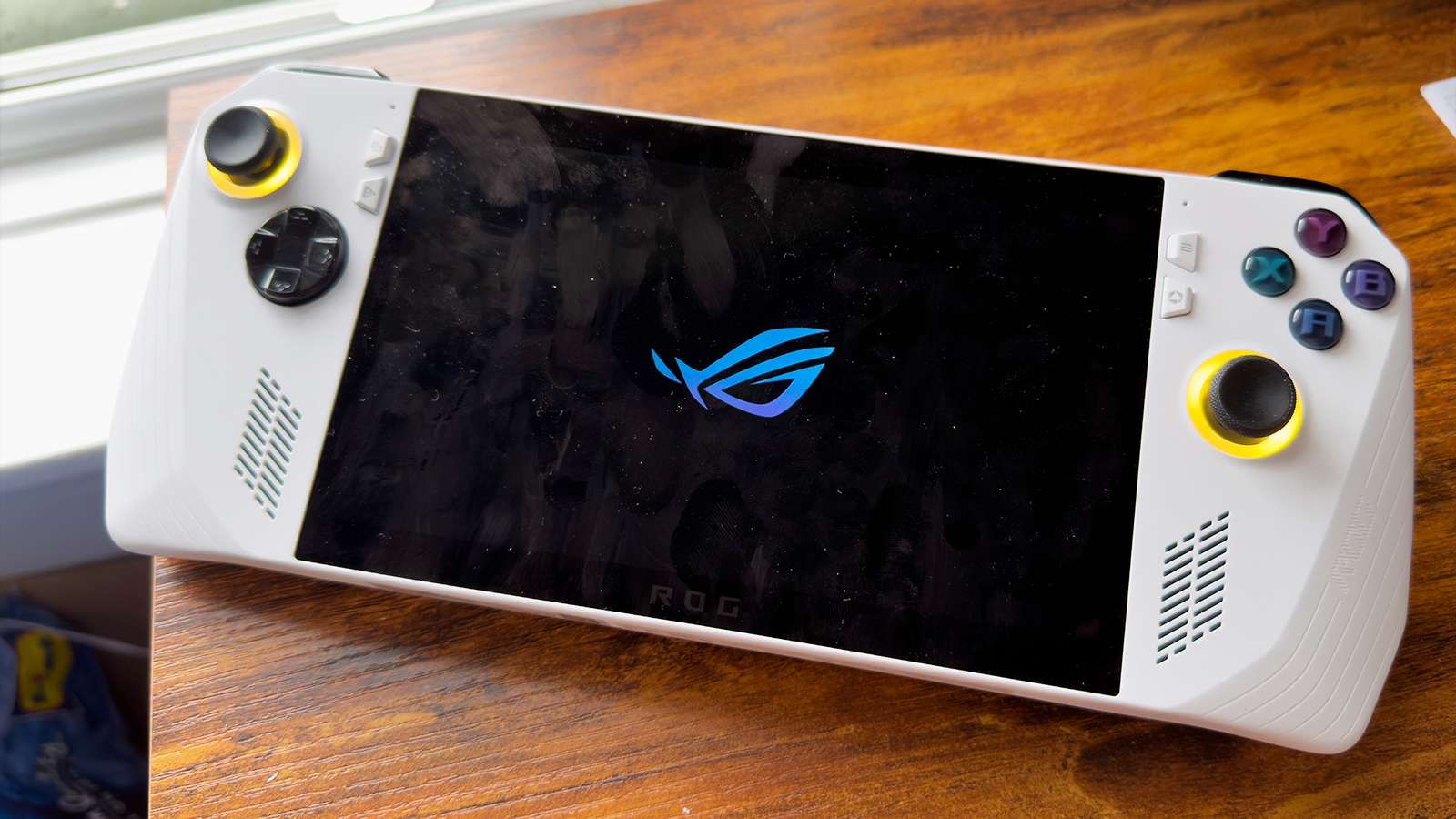
The Asus ROG Ally packs a lot of power into a comfortable handheld, but how does it compare to things like Valve’s Steam Deck? Is the current handheld arms race just about raw specs, or are there more elements to consider?
There’s a small, rumbling paradigm shift in the PC gaming market. While desktop gaming is bigger than ever, the rise of handheld devices is in full swing. This year alone will see a deluge of hardware launches in different shapes, but Asus is the first out of the gate, armed with new silicon, and a competitive price point.
Asus isn’t hiding the fact that it wants to best Valve and the Steam Deck. The advertisements use Ally in the hashtag #AllYourGames. A device that plays everything, with no workarounds needed, is incredibly appealing. It even comes with much better specs than Valve’s popular handheld. But, specifications are not the be-all-end-all in what makes a device good.
Key specs
- APU: AMD Z1 Extreme
- RAM: 16GB DDR5 (6400MHz)
- Display: 7-inch 16:9 (120Hz display)
- Storage: 512GB PCIe 4.0 NVMe SSD
- Operating System: Windows 11
- IO: USB-C (DisplayPort), PCIe XG, UHS-II MicroSD Slot
- Features: Embedded controller, three performance modes, dual speakers
- Price: $699
Design
We really like the Asus ROG Ally’s overall design. It’s a chunky fit in the hands, but long sessions playing Path of Exile or Forza Horizon 5 never caused us any issues. The flat bottomed edge and bright white shell give it that distinctive Asus ROG look, without being overtly “gamery”.
The whole controller is a natural fit in the hands, taking inspiration from both Nintendo and Microsoft. With no trackpads, they’ve used the space to ensure comfort. Although, it feels like they couldn’t help themselves.
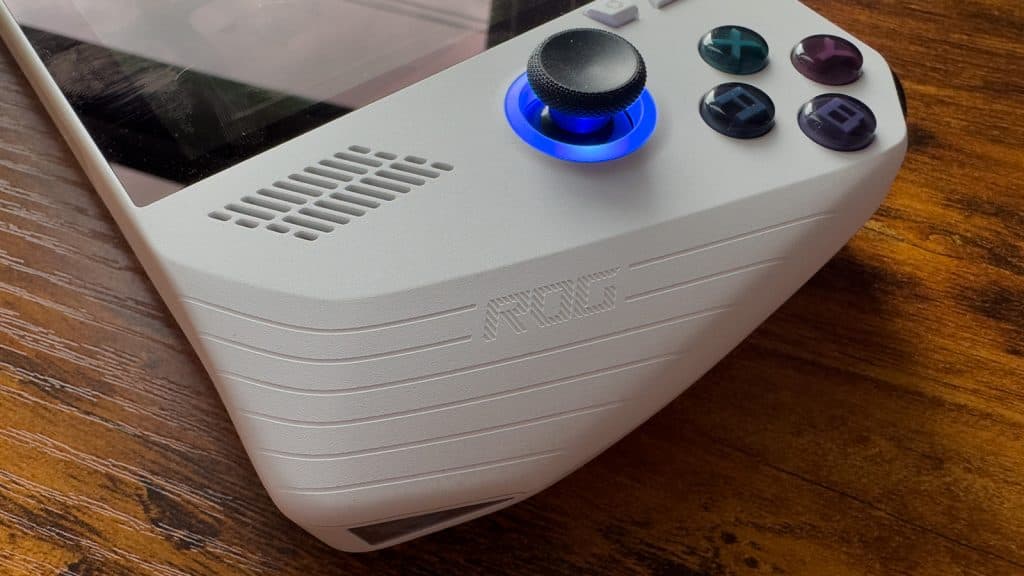 Dexerto
DexertoWe found the RGB rings that surround the sticks unnecessary. Laying in bed with a bright screen is one thing, but having a small disco on at the same time became distracting and seems to be one source of battery drain. They also turn on while charging, flashing incessantly in the process.
However, the directional pad is not good, reminding us of the Xbox 360’s mushy and imprecise implementation. It doesn’t feel like an afterthought, more of a compromise somewhere in the design process. Even the buttons have this cheap stiffness to them that does not feel great to use.
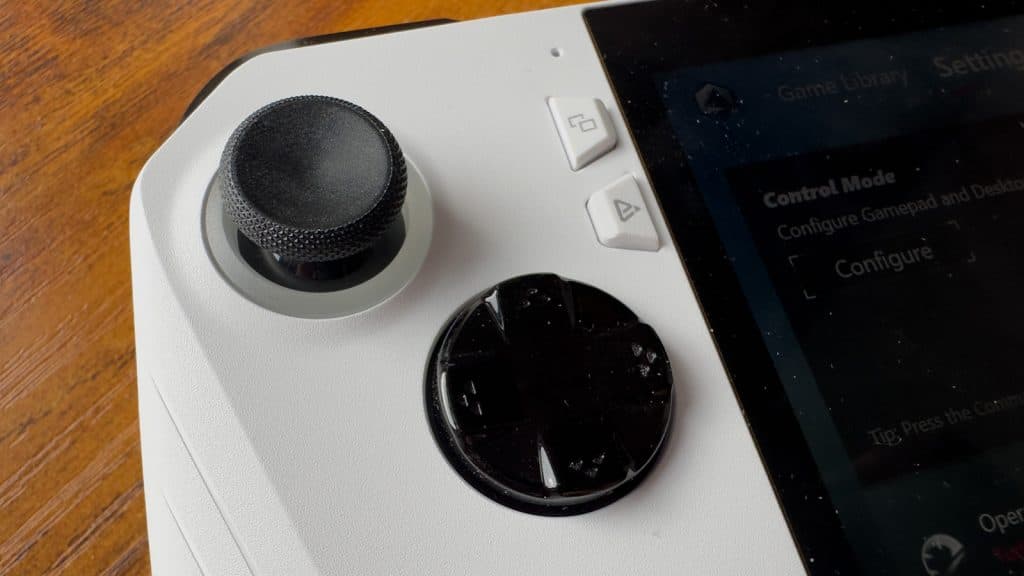
A lot of the Asus ROG Ally’s design flaws stem from the slight compromise quirks that flow from the top of the device, to deep inside it on a software level.
The top part of the handheld, where the PCIe port is, is uncovered leaving an even bigger entry point for dust and spills to get in. The device also boasts a 120Hz screen, while a blessing for certain titles, gets bizarrely hot over prolonged use.
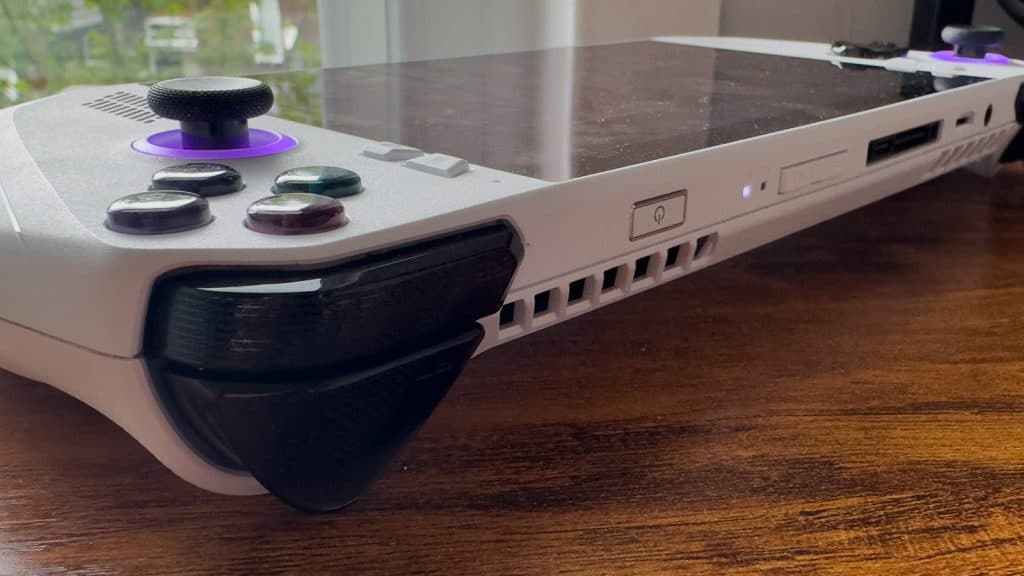 Dexerto
Dexerto On the back, the two paddles have a lip to them, rather than embedded or pulled closer into the plastic, giving them an unpleasant button press should you ever desire to use them. The raised lip also caught our fingers a few times.
The ROG Ally’s various design quirks only snowball into further issues when looking deeper into the device- especially its features and software.
Features
Asus’ decision to go with Windows 11 and its own overlay software isn’t a new idea. Ayaneo, GPD Win, and AOKZOE all settled on the same combination. The Steam Deck, despite being built from the ground up, also uses a custom overlay for settings while running on SteamOS.
However, the difference is, none of these handhelds are built from the ground up with a bespoke OS in mind. It’s bolting software to software in an attempt to attain a smoother UX in more of an effort to be console-like. While Armory Crate, Asus’ version, works just fine once you have a library of games installed, the decision to go all in on Windows 11 is where things begin to falter.
Windows 11 on the ROG Ally
Microsoft has had a strange time with touch interfaces since Windows 7. Windows 8 introduced Metro UI, making it ideal for throwing onto tablets or a phone. Everyone hated it, so for Windows 10, they killed it off and said “trust us” for tablet use on the OS. It is, and still remains poor, even with Windows 11’s chunkier user interface.
Using Windows 11 on the ROG Ally isn’t the worst thing in the world, but it could be so much better. Asus has done its best, turning one stick into the mouse and left click simultaneously or trying to circumvent Windows’ eccentricities, but it’s not great.
It’s telling that when you launch Steam from Armory Crate, it pushes you into Steam Big Picture Mode, which now looks exactly like the Steam Deck’s UI. It’s within this interface that we had the best time with the ROG Ally.
Windows also seems to be at the core of a lot of other issues. When putting the device to sleep for a while, it’ll hibernate and force you to go through a boot sequence. This has caused progress to be lost in games like Resident Evil 4, which we had no problems with while using the Steam Deck.
It also feels odd that Asus would go hand-in-hand with Microsoft across a project like this, as good as Game Pass is as a service, its Windows app is a mess. Downloading and launching games still remain its primary function, and one it can’t do properly. Forza Horizon 5 took a solid hour before it’d begin downloading and this is something we’ve replicated elsewhere, too.
Battery life
Battery life is also a massive concern. For a portable device, at the various profiles and resolutions it can run at, we never saw past that two-hour mark in AAA games, and certain indie titles would hit about three. This is no different from something like the Steam Deck, but if you plan on using this at full whack (120Hz, Turbo Mode), you’ll be out of battery in just over an hour – regardless of the title you’re running.
Armory Crate
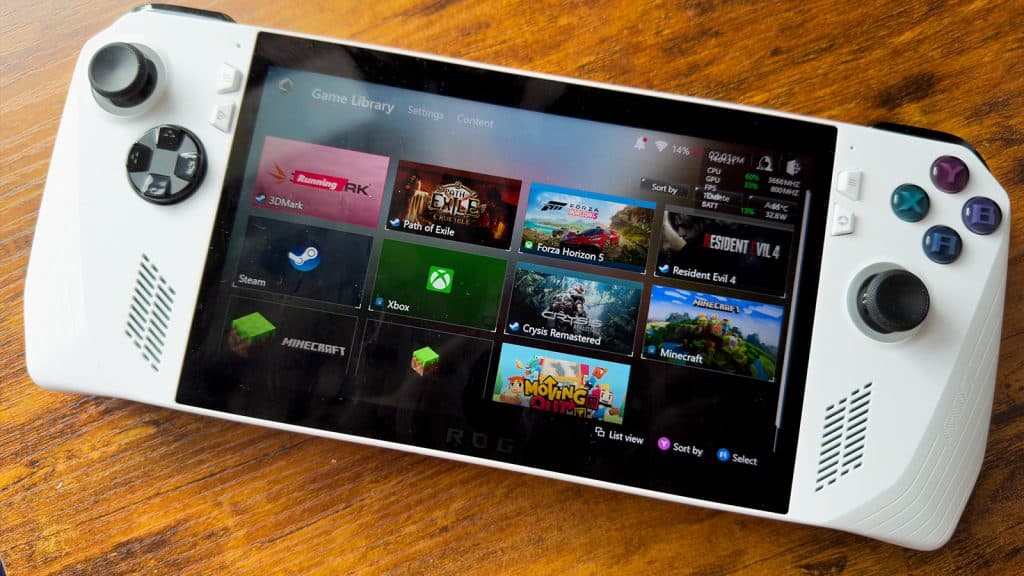
To circle back to Armory Crate, it’s genuinely a good piece of software. It’s quick to appear with either button and doesn’t seem to interfere with the games too much. During testing, we were able to change RE4 Remake from 1080p, 120Hz to 720p, 60Hz with just a few button presses, and the only major interruption was the screen blacking out while it readjusted.
The options for what you can do with the hardware from the outset are great, and genuinely easy to understand. You can dig deeper into things if you want, but the surface-level options are quite enough for everyday users. Without terms like “TDP” clogging things up, you don’t feel scared to adjust things on the fly.
It’s also the only time that you’ll see the Asus ROG Ally function as we imagine was intended. The game menu is extremely easy to use, but has a major flaw: it doesn’t deactivate control of the game while using it. You might need to alter some settings, but the game will continue to register any button presses as inputs. This can be a run killer in things like Dead Cells, and absolutely caused us to fail a few Mercenaries runs in RE4.
On top of this, rather than having a repository to pull executable files from, when you choose to install an additional launcher, it fires you into its webpage. Saving an older launcher, hosting it, and then updating it after the fact would make for a much smoother experience.
Upgradability
Thankfully, the Asus ROG Ally can be torn apart to upgrade that SSD inside. It is shocking how small 512GB can be once you’ve installed Forza Horizon 5 and a couple of other titles.
Asus has soldered the RAM onto the main board, leaving this with only one upgrade path in the future. Outside of storage swaps, there’s not much else to tinker with on the inside.
Gaming performance
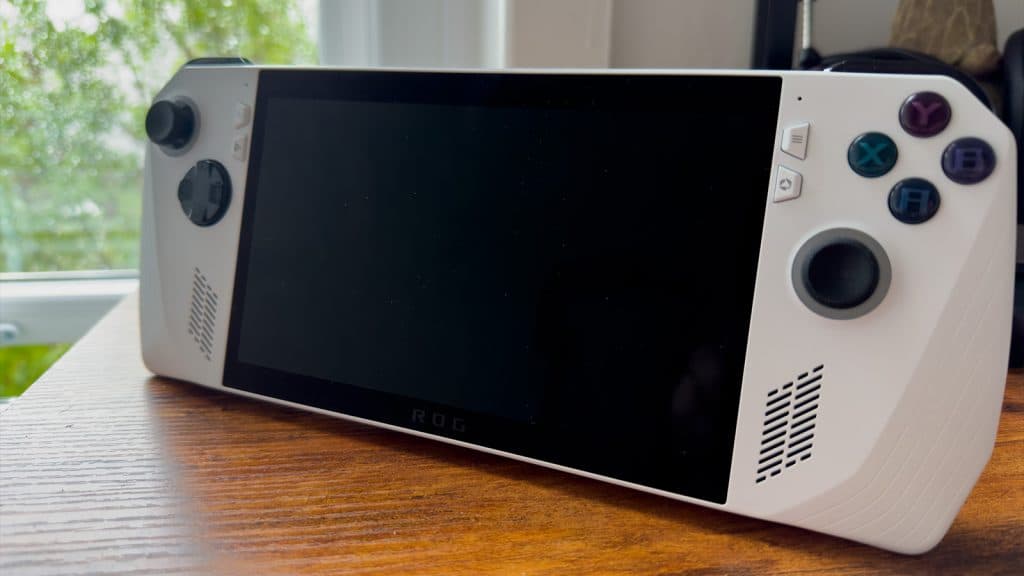
Inside our ROG Ally is a Z1 Extreme, and it’s incredibly capable. In most modern titles and AAA games we threw at it, after a few settings tweaks, it was able to pull an average of 60FPS.
The comfortable controller, combined with a healthy spec makes the ROG Ally an excellent machine to game on. When everything slots into place, it’s a potent machine that only asks that you be near a charger.
However, it isn’t without downsides. The embedded controller will sometimes not recognize games, forcing you to use the Armory Crate to change the detection settings to force controller support.
It also lacks any decent mouse controls. This might be the biggest disappointment of them all, and how Steam Deck users have taken the track pads for granted. Without these and forced to use the touch screen or thumb stick as a mouse locks out entire genres of PC gaming titles. Not quite what Asus boasts in its marketing materials.
While you can run Hearts of Iron IV or other older PC games – and they run great – playing them is almost out of the question. If there’s no controller support, that #ALLYourGames hashtag is more like #SomeOfYourGames*.
Our time spent in Path of Exile saw the frame rate steady at 60FPS when the screen was locked to 60Hz, while Resident Evil 4 and Cyberpunk both pushed the hardware to varying degrees. Forza Horizon 5 pulled in a smooth 57FPS in our initial default benchmarks.
Asus ROG Ally gaming benchmarks
Forza Horizon 5
 Microsoft
Microsoft | Forza Horizon 5 | Low Preset (MSAA/Turbo/120Hz/1080p) | Low Preset (MSAA/Turbo/120Hz/1080p) | Low Preset (FSR/Turbo/60Hz/1080p) | Ultra Preset (FSR/Turbo/60Hz/1080p) |
|---|---|---|---|---|
| FPS | 74 | 48 | 60 | 36 |
Forza Horizon 5 is wonderfully optimized, making it a great experience for the Z1 Extreme. However, we never thought we’d see it rip through the benchmarks in this way. Of course, for the best experience, it’ll be best to stick with Low settings. With the game’s image compressed onto a smaller screen, it looks tremendous.
Even on Ultra, with the backing of FSR 2.2’s Performance Mode, we managed to squeeze 36FPS out of it. With some additional tweaks and diving further than supersampling, we could see this hitting those high 50s.
Path of Exile
 Grinding Gear Games
Grinding Gear Games| Path of Exile | High (Turbo/1080p/120Hz) | High (Turbo/1080p/60Hz) | High (Performance/1080p/60Hz) | Medium (Performance/1080p/60Hz) |
|---|---|---|---|---|
| FPS | 89 | 60 | 54 | 60 |
Path of Exile is an odd one, as it is heavily reliant on the server side of the game. However, we saw highs of 120FPS during quieter moments of exploration, and a solid average 89 while trudging through Act 4’s explosive boss battles. The extra headroom from the 120Hz screen also made certain moment-to-moment combat situations feel far smoother than the Steam Deck.
Resident Evil 4 Remake
 Capcom
Capcom| Resident Evil 4 | Low (Turbo/720p/120Hz/FSR) | Low (Turbo/1080p/60Hz/FSR) | Low (Performance/720p/60Hz) | Low (Performance/1080p/120Hz/FSR) | Medium (Turbo/1080p/120Hz) |
|---|---|---|---|---|---|
| FPS | 69 | 60 | 59 | 57.5 | 25 |
As you can see from the Medium benchmark, Resident Evil 4 plays best on the ROG Ally when it’s on Low. There are a tonne of settings within the game that can be changed to get even more out of the device too. RE4 is obsessed with turning up its model textures, but setting these down to the minimum will net you some additional performance.
Cyberpunk 2077
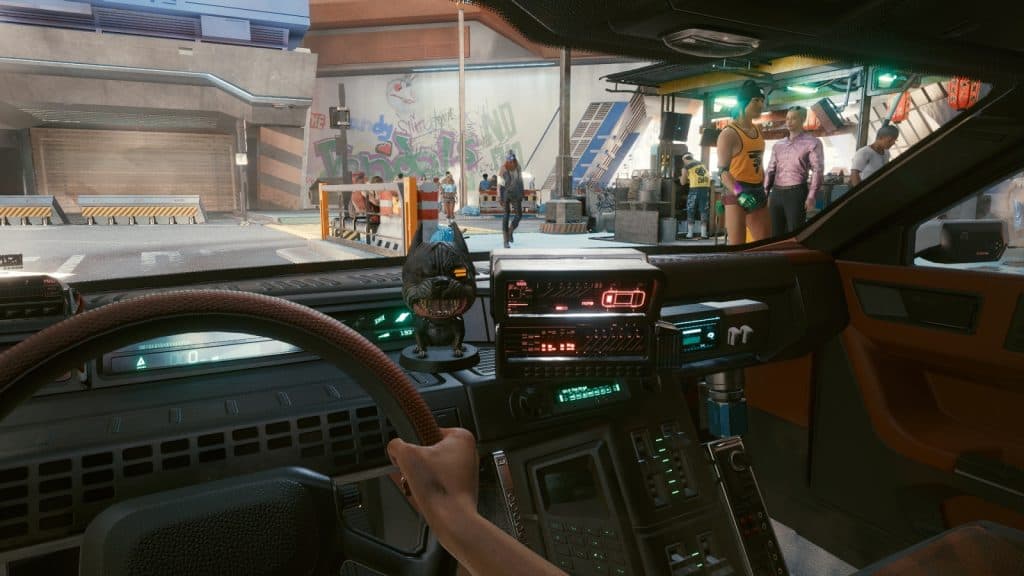 CD Projekt RED
CD Projekt RED| Cyberpunk 2077 | Medium (Turbo/1080p/120Hz) | Steam Deck (Turbo/1080p/120Hz) | High (Turbo/720p/120Hz) | Medium (Turbo/720p/120Hz) | Medium (Performance/720p/60Hz) | Low (Performance/720p/60Hz) |
|---|---|---|---|---|---|---|
| FPS | 49 | 47 | 54 | 56 | 35 | 36 |
The current bar for benchmarking, Cyberpunk 2077’s performance on the Ally impressed us. While there’d have to be some work done in the various settings, it’s a solid performance across the board when using the Turbo mode.
Asus ROG Ally synthetic benchmarks
| Benchmark | Time Spy | Time Spy Extreme | Speed Way |
|---|---|---|---|
| Turbo | 3114 | 1481 | 412 |
The Asus ROG Ally has pretty impressive performance in 3DMark’s benching suite, even managing to run Speed Way, a heavy tay-tracing benchmark. Though, the Z1 extreme is only 14% faster than the 6800U housed within the Ayaneo 2 in the Time Spy Extreme benchmark.
Sound levels
We did find the claims of the Asus ROG Ally to be quieter than the Steam Deck to be situational at best. On Turbo mode, the fans go into overdrive to keep everything cool and were exceptionally louder than the Steam Deck. However, on Performance Mode, it was considerably quieter, but at the cost of performance. Meanwhile, Whisper Mode is as it sounds, but it turns the performance of the device all the way down, putting a stop to a lot of gaming.
Asus ROG Ally – doomed to repeat the past?
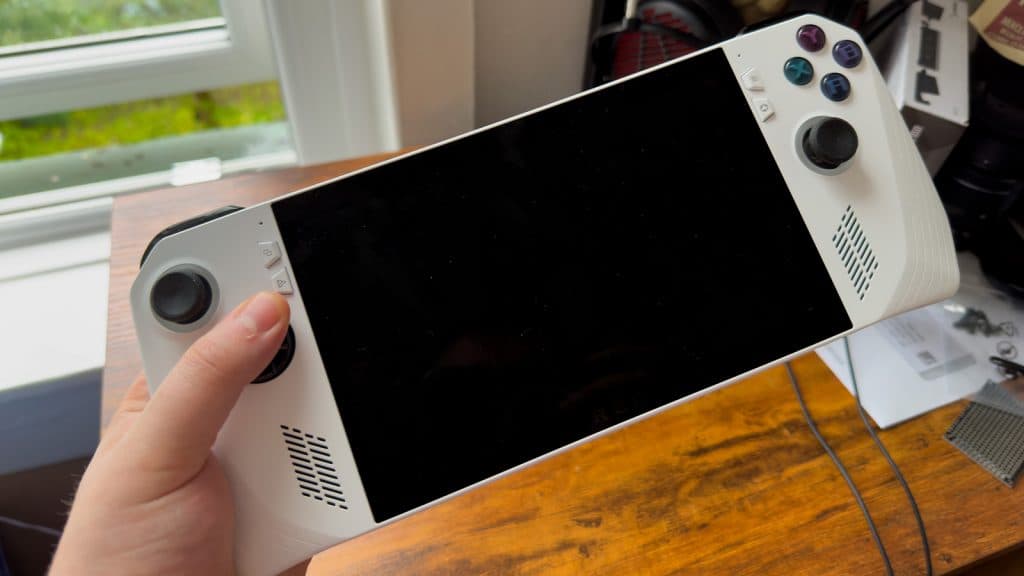 Dexerto
DexertoAll of these results are fascinating to look at, as a signpost for the future. However, despite Asus’s best attempts to make a Steam Deck killer, they’ve forgotten the key components of what makes a gaming handheld great.
The “handheld wars” are back for a third time, and this time Nintendo isn’t part of the equation. Nintendo doesn’t look at the hardware the same as the rest of the industry does, at least not externally. It’s why you likely will not see a Nintendo Switch 2 competing on the same level if it was to be released today.
Asus, Valve, and others, however, do look at the industry with hardware in mind. Asus has also failed to take into account the history of high-powered handhelds, like Sega and Atari’s attempts at making devices. More power doesn’t mean “more fun to be had”, and can potentially cause the hardware to inadvertently expose its flaws.
Only one game hit 120FPS comfortably, but it wasn’t consistent. It never needed exceptional specs, because a vast majority of the games will be played at most, on a tweaked Medium setting, or with supersampling enabled.
What makes the Steam Deck an exceptional device, is the thought put into it. Back paddles that are embedded and easy to reach. A screen and hardware that won’t drain itself just because you dared to use its default settings.
Sure, some of the games above run considerably worse, but for a handheld, the ROG Ally is powerful for the sake of being powerful.
Look back on the original Gameboy and Nintendo’s rivals. Sega released a color handheld way before Nintendo did. The Game Gear didn’t last too long. It was expensive to play and buy. Games weren’t plentiful in comparison.
Pricing
The relatively high cost of the device seems like it could have been worked around in multiple ways. As we’ve already said, the excessive specs of the screen, additional RGB and various choices to go with a unique, high-cost APU make it a tough decision.
While games might run better, the only question that you need to ask yourself is if you really care about how a game looks on a device this size. When comparing some of the games we tested when compared to the Steam Deck, we began to notice that there’s not that big of a gulf between the two systems to warrant the cost alone.
Should you buy it?
A good handheld, like the Gameboy, is an easy-to-use, easy-to-access device. The nature of the ROG Ally, and indeed other Windows-based handhelds is that they just don’t have the same pick-up-and-play factor. Valve managed to smooth this over somewhat with the Steam Deck, but other handhelds just don’t come anywhere near as close as replicating it.
Verdict – 3/5
Impressive specs and performance cannot possibly outweigh the multitude of issues that plague the overall user experience on the Asus ROG Ally. When it comes together and works, Asus has a great little device on its hands.
By the time we were done with everything, we looked at the bounty of handheld machines at our disposal and still settled for the Steam Deck. Regardless of Linux and Proton compatibility, the Steam Deck feels like a more cohesive device and not a series of contraptions bolted together on top of an OS that’s not ready for it yet.
If you click on a product link on this page we may earn a small affiliate commission.